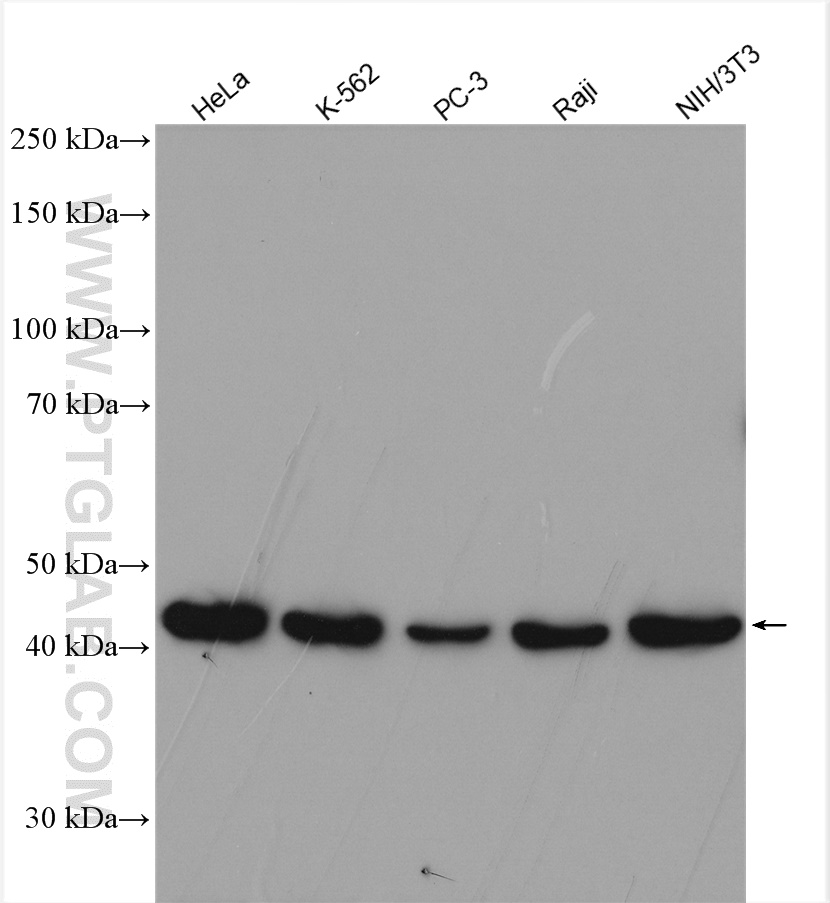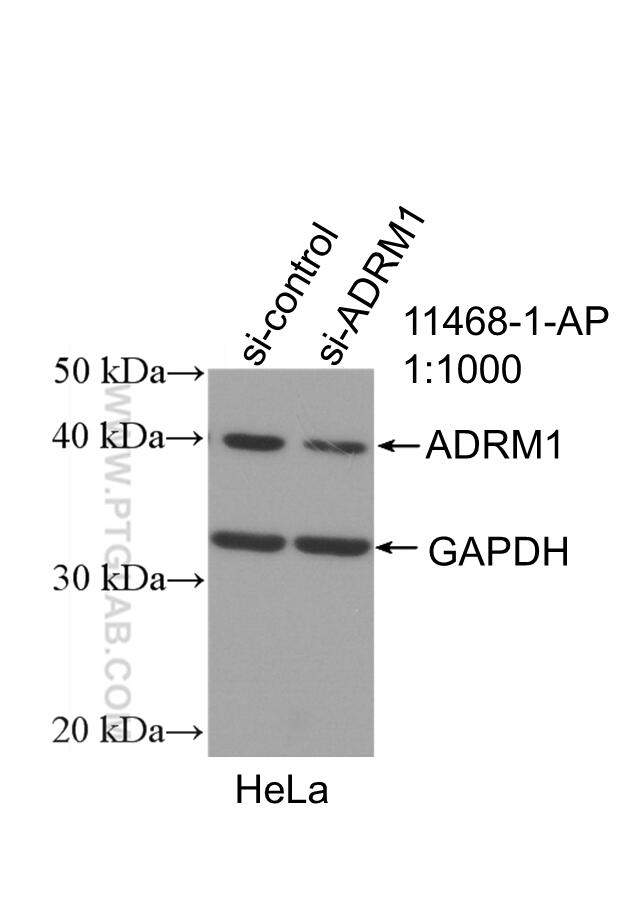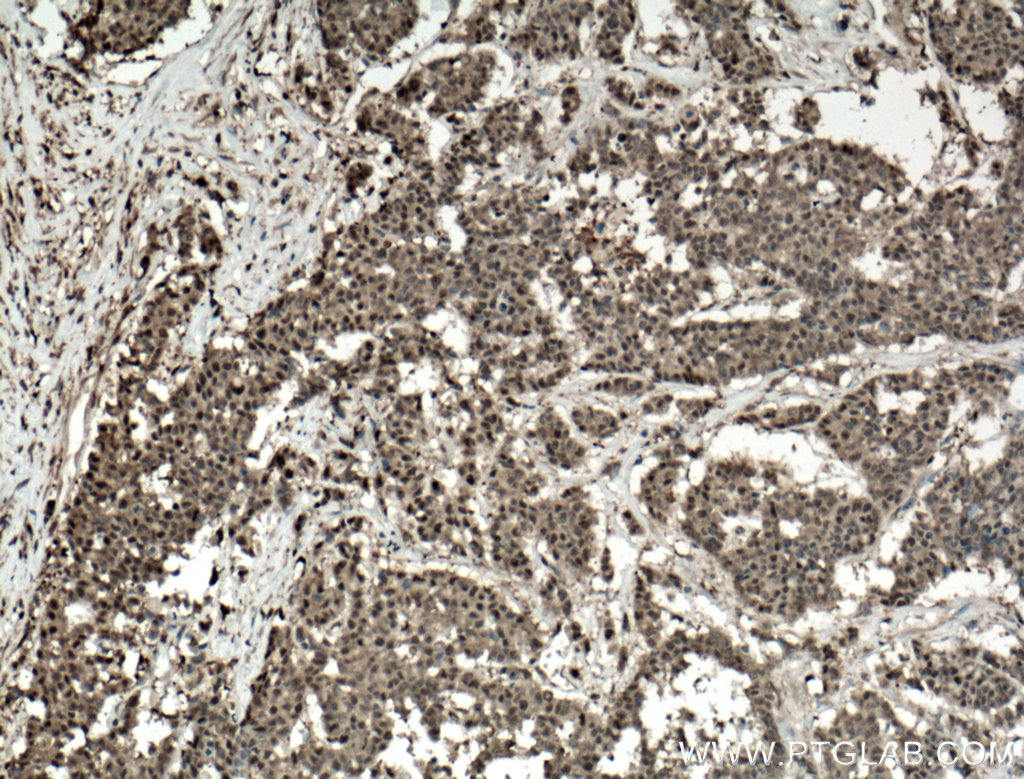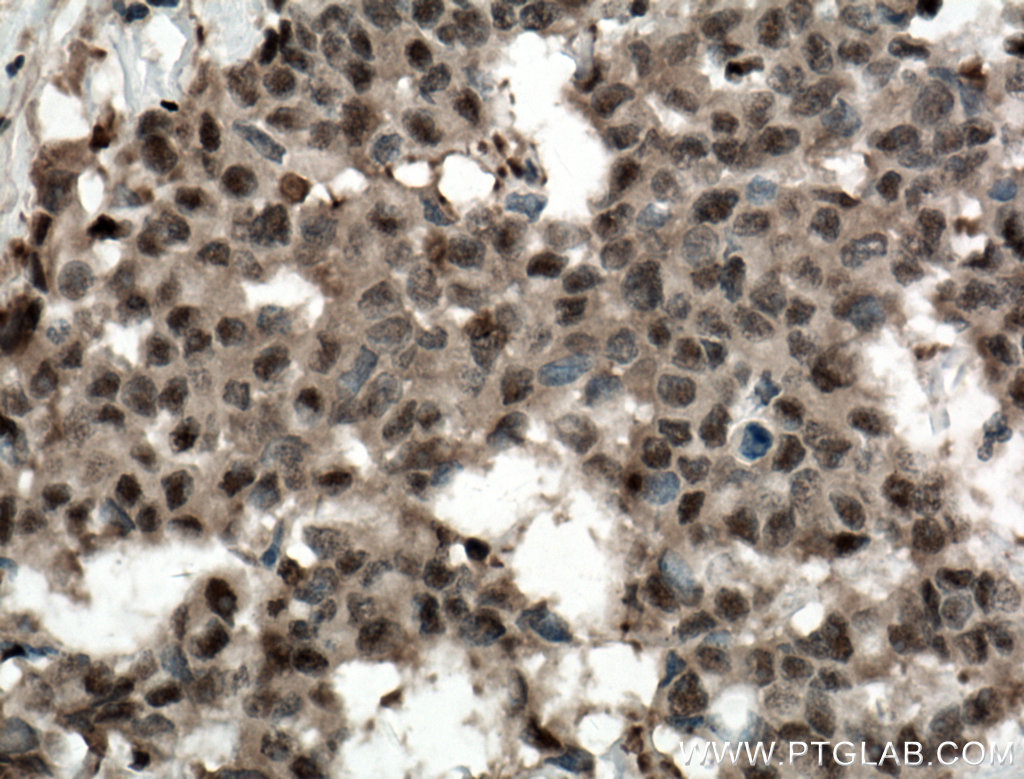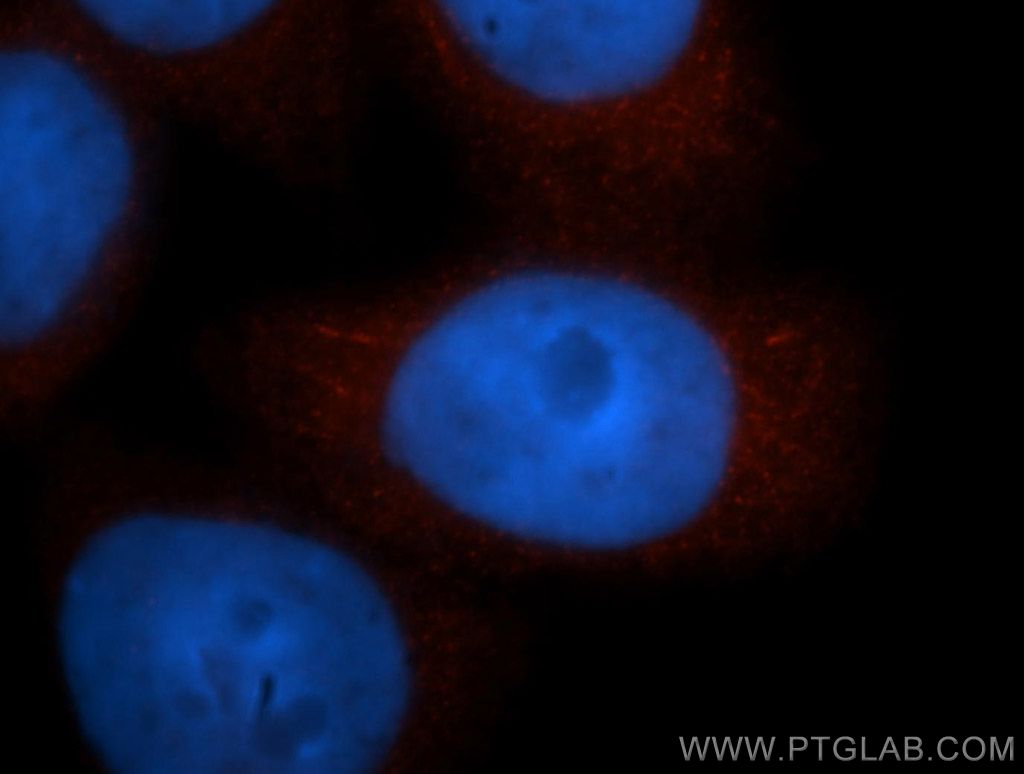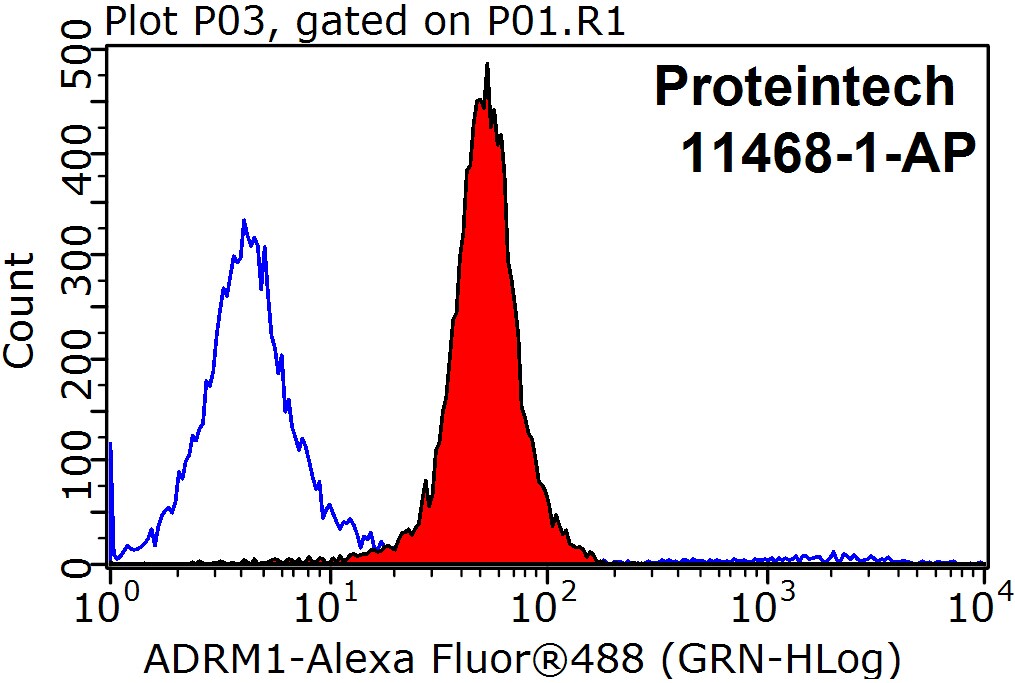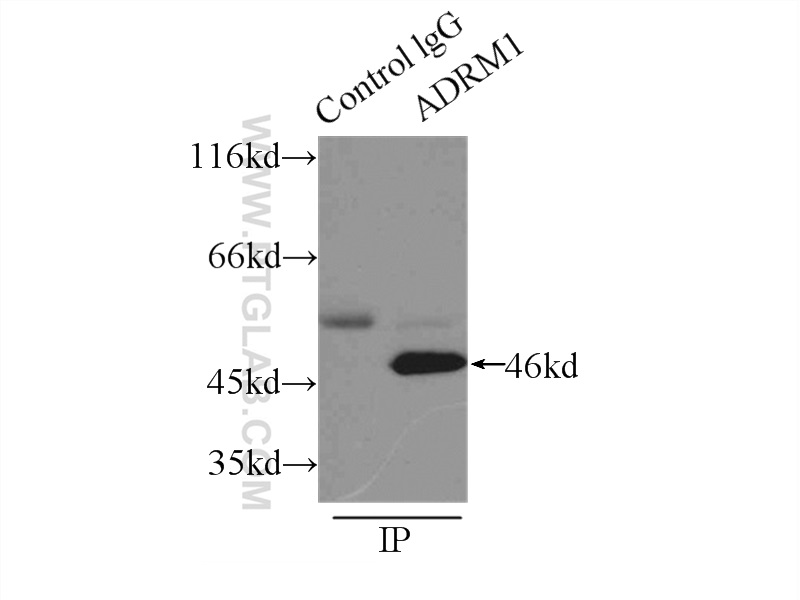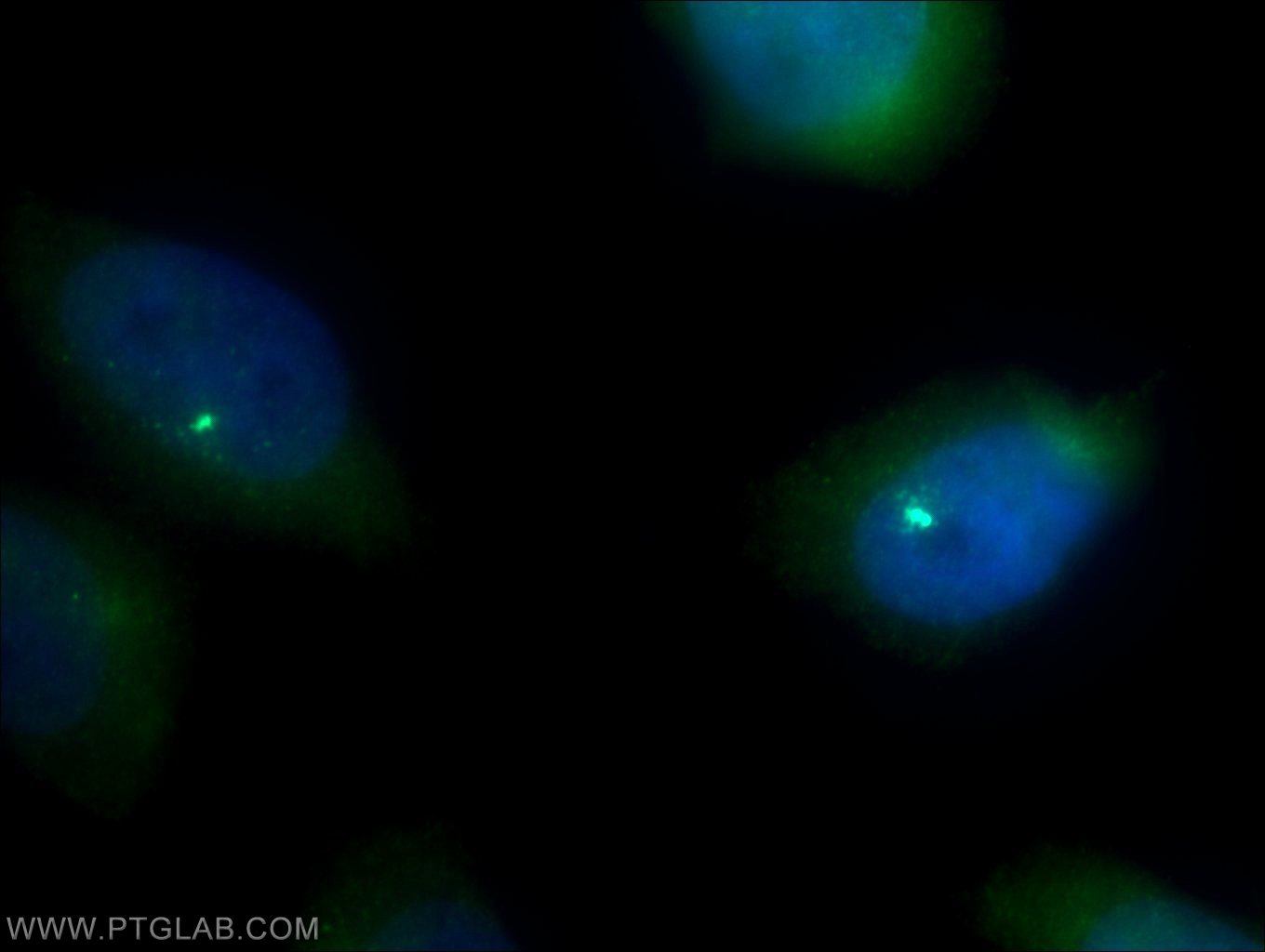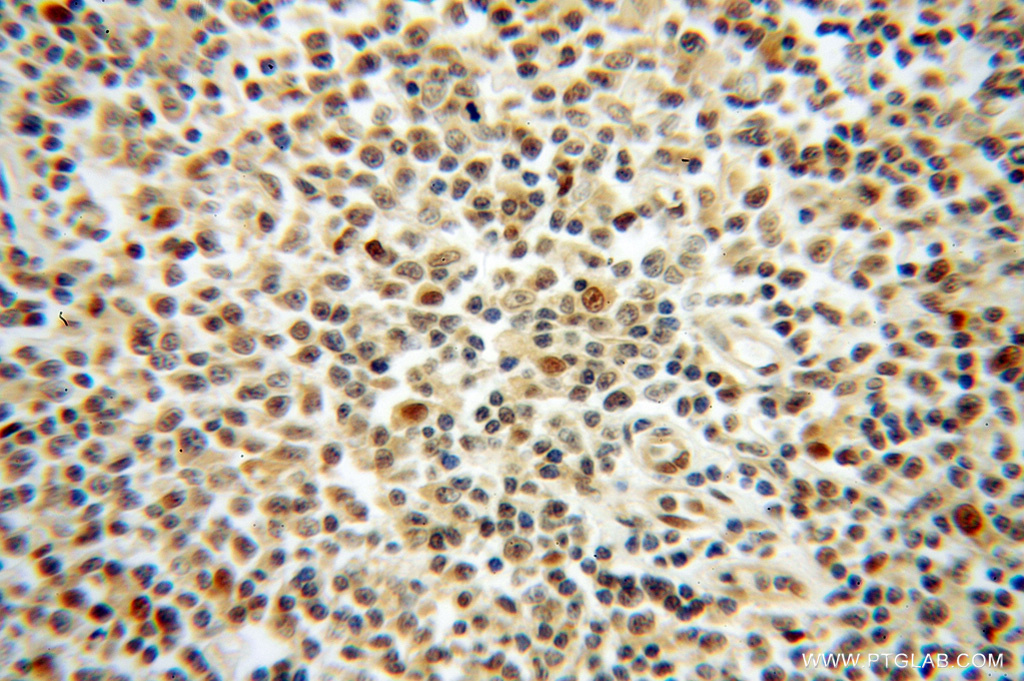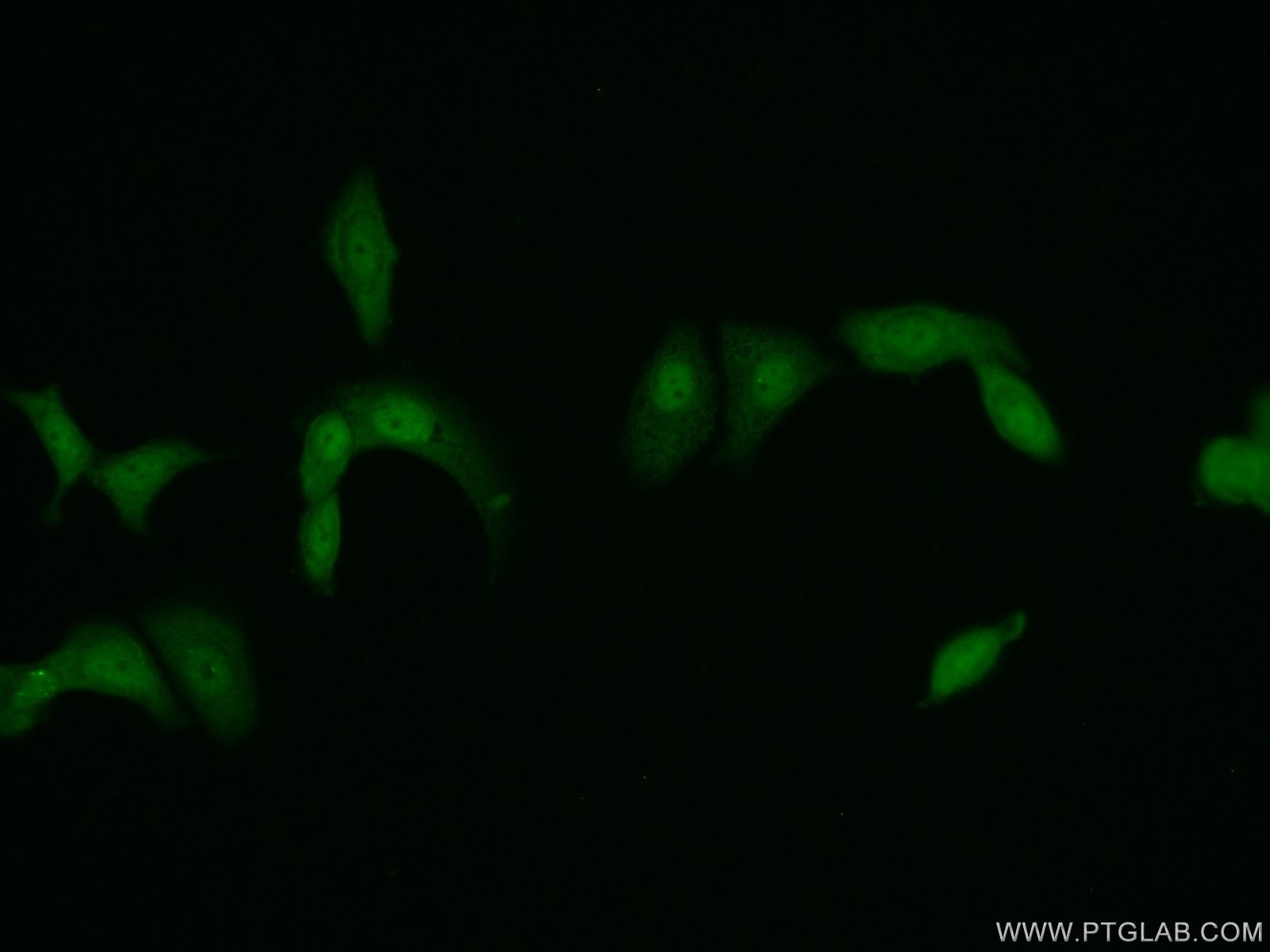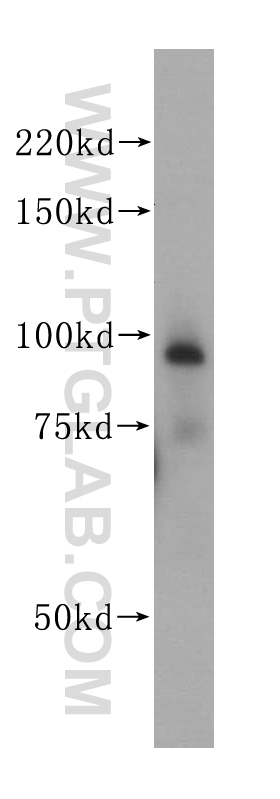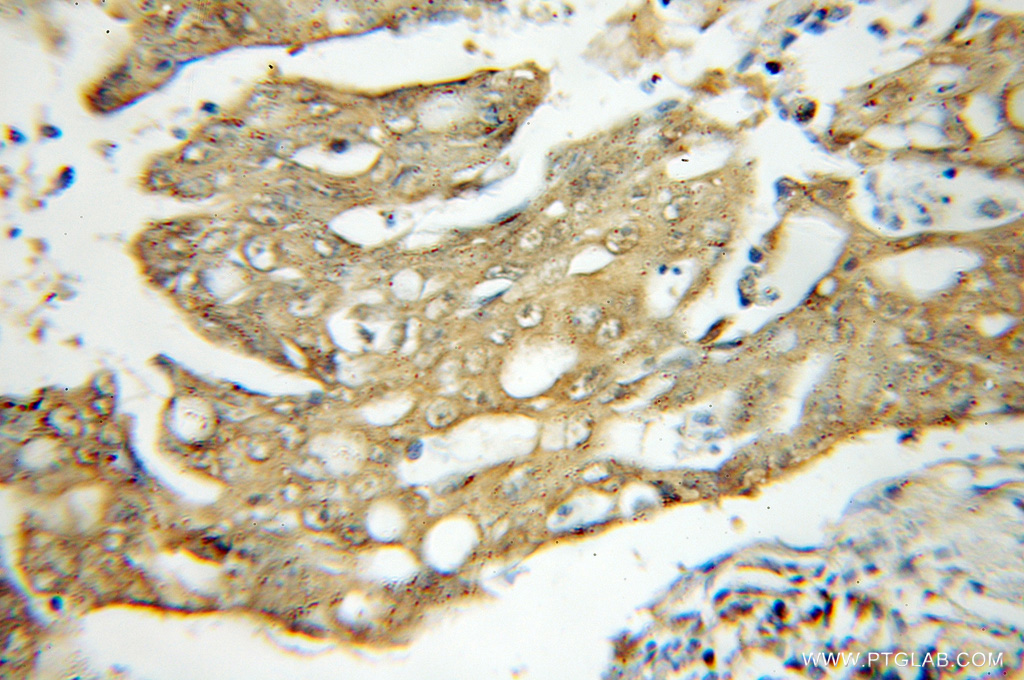- Featured Product
- KD/KO Validated
ADRM1 Polyclonal antibody
ADRM1 Polyclonal Antibody for FC, IF/ICC, IHC, IP, WB, ELISA
Host / Isotype
Rabbit / IgG
Reactivity
human, mouse, rat
Applications
FC, IF/ICC, IHC, IP, WB, ELISA and More (1)
Conjugate
Unconjugated
验证数据展示
经过测试的应用
| Positive WB detected in | HeLa cells, K-562 cells, PC-3 cells, Raji cells, NIH/3T3 cells |
| Positive IP detected in | mouse testis tissue |
| Positive IHC detected in | human colon cancer tissue Note: suggested antigen retrieval with TE buffer pH 9.0; (*) Alternatively, antigen retrieval may be performed with citrate buffer pH 6.0 |
| Positive IF detected in | MCF-7 cells |
| Positive FC detected in | MCF-7 cells |
推荐稀释比
| Application | Dilution |
|---|---|
| Western Blot (WB) | WB : 1:1000-1:5000 |
| Immunoprecipitation (IP) | IP : 0.5-4.0 ug for 1.0-3.0 mg of total protein lysate |
| Immunohistochemistry (IHC) | IHC : 1:50-1:500 |
| Immunofluorescence (IF) | IF : 1:20-1:200 |
| Flow Cytometry (FC) | FC : 0.20 ug per 10^6 cells in a 100 µl suspension |
| It is recommended that this reagent should be titrated in each testing system to obtain optimal results. | |
| Sample-dependent, Check data in validation data gallery. | |
产品信息
11468-1-AP targets ADRM1 in WB, IP, IF, FC, IHC, CoIP, ELISA applications and shows reactivity with human, mouse, rat samples.
| Tested Applications | FC, IF/ICC, IHC, IP, WB, ELISA |
| Cited Applications | WB, IP, IF, IHC, CoIP |
| Tested Reactivity | human, mouse, rat |
| Cited Reactivity | human, mouse |
| Immunogen | ADRM1 fusion protein Ag1997 种属同源性预测 |
| Host / Isotype | Rabbit / IgG |
| Class | Polyclonal |
| Type | Antibody |
| Full Name | adhesion regulating molecule 1 |
| Synonyms | adhesion regulating molecule 1, ADRM1, ARM 1, ARM1, GP110, hRpn13, Rpn13, Rpn13 homolog |
| Calculated Molecular Weight | 407 aa, 42 kDa |
| Observed Molecular Weight | 46 kDa |
| GenBank Accession Number | BC017245 |
| Gene Symbol | ADRM1 |
| Gene ID (NCBI) | 11047 |
| RRID | AB_2273873 |
| Conjugate | Unconjugated |
| Form | Liquid |
| Purification Method | Antigen affinity purification |
| UNIPROT ID | Q16186 |
| Storage Buffer | PBS with 0.02% sodium azide and 50% glycerol pH 7.3. |
| Storage Conditions | Store at -20°C. Stable for one year after shipment. Aliquoting is unnecessary for -20oC storage. |
背景介绍
实验方案
| Product Specific Protocols | |
|---|---|
| WB protocol for ADRM1 antibody 11468-1-AP | Download protocol |
| IHC protocol for ADRM1 antibody 11468-1-AP | Download protocol |
| IF protocol for ADRM1 antibody 11468-1-AP | Download protocol |
| IP protocol for ADRM1 antibody 11468-1-AP | Download protocol |
| Standard Protocols | |
|---|---|
| Click here to view our Standard Protocols |
发表文章
| Species | Application | Title |
|---|---|---|
Proc Natl Acad Sci U S A Dendritic spinopathy in transgenic mice expressing ALS/dementia-linked mutant UBQLN2. | ||
Oncogene The degradation of p53 and its major E3 ligase Mdm2 is differentially dependent on the proteasomal ubiquitin receptor S5a. | ||
Genes Chromosomes Cancer Comprehensive analysis of 20q13 genes in ovarian cancer identifies ADRM1 as amplification target. | ||
Biochem Biophys Res Commun Disturbance of proteasomal and autophagic protein degradation pathways by amyotrophic lateral sclerosis-linked mutations in ubiquilin 2. |
